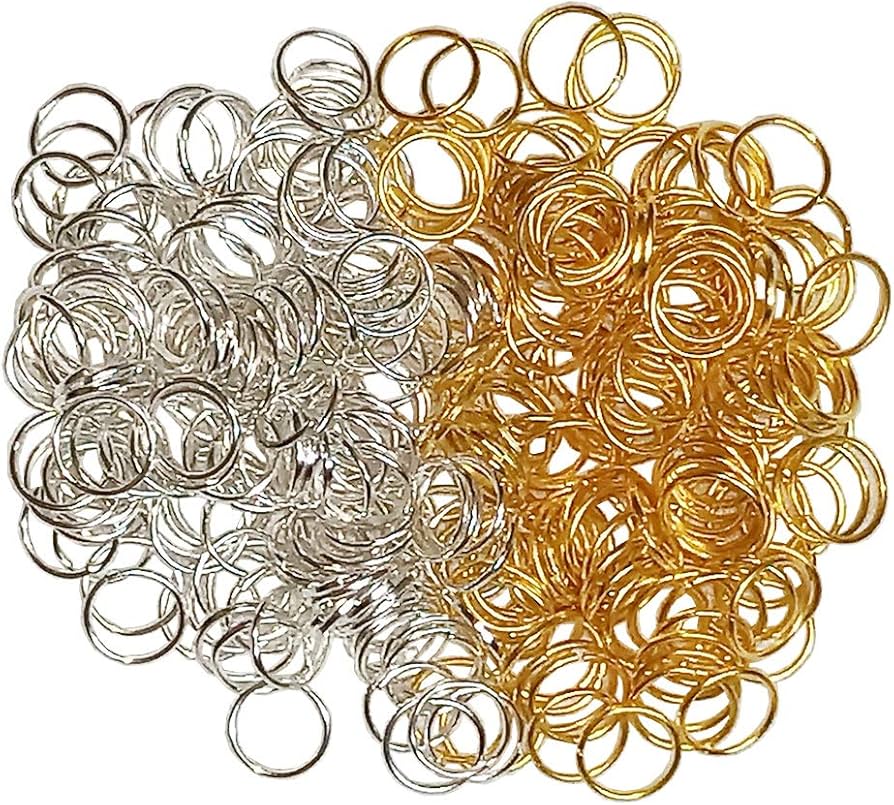
Jump rings are small but mighty components in the world of jewelry making. These unassuming rings serve as connectors for chains, clasps, pendants, charms, and more. But not all jump rings are created equal—and understanding the difference between open, closed, and split jump rings is essential for anyone who wants their jewelry to look professional and last over time.
In this article, we’ll break down the characteristics, benefits, and best uses for each type of jump ring so you can confidently choose the right one for your project.
What Are Jump Rings, and Why Are They Important?
Jump rings are circular (or sometimes oval or shaped) metal loops used to connect jewelry components. Despite their size, they play a critical role in the structure, appearance, and durability of a finished piece.
There are three primary types of jump rings used in jewelry making:
-
Open jump rings
-
Closed jump rings
-
Split jump rings
Each type has a specific purpose and set of pros and cons, which we’ll explore in detail.
1. Open Jump Rings
What They Are
Open jump rings are circular rings with a small slit that allows them to be opened and closed using pliers. They are the most commonly used type in handmade jewelry.
Pros
-
Easy to use and adjust with simple tools.
-
Versatile and available in many sizes and materials.
-
Ideal for connecting components like charms, pendants, and clasps.
Cons
-
Can open over time if not closed securely.
-
May not be suitable for heavy-duty or high-wear designs.
Best Uses
-
Lightweight necklaces and bracelets.
-
Earrings.
-
Chainmaille and decorative weaves.
-
Jewelry that requires frequent changes or customization.
Pro Tip
Use two pairs of flat- or chain-nose pliers to gently twist (not pull) the ring open and closed. This ensures a tight, flush connection that won’t weaken over time.
2. Closed Jump Rings
What They Are
Closed jump rings are solid, seamless rings with no opening. They cannot be opened or closed and must be connected using other findings (like open rings or wire wrapping).
Pros
-
Very strong and secure—won’t open unintentionally.
-
Ideal anchor points for clasps or beaded links.
-
Provide a clean, professional finish.
Cons
-
Less flexible—components must be attached using additional connectors.
-
Not suitable when you need to make last-minute adjustments.
Best Uses
-
Secure attachment points for lobster clasps or toggles.
-
Anchor points for beaded strands in necklaces or bracelets.
-
Projects where strength and durability are a priority.
Pro Tip
Use closed rings with soldered or crimped connections to reinforce high-stress areas, especially in high-end or heirloom-quality jewelry.
3. Split Jump Rings
What They Are
Split rings look like miniature key rings with two coils of metal overlapping. You twist the coil open to slide components on, which makes them highly secure.
Pros
-
Very strong and less likely to come apart.
-
Great for items that experience tugging or repeated wear.
-
Excellent for attaching keychain charms or heavy pendants.
Cons
-
Harder to manipulate—can be challenging for fine jewelry.
-
Bulkier appearance may not suit delicate or dainty designs.
-
Components can catch in the double coils if not attached carefully.
Best Uses
-
Keychains and bag charms.
-
Men’s or industrial-style jewelry.
-
Children’s jewelry (where added security is important).
-
Jewelry pieces prone to wear and tear.
Pro Tip
Use split ring pliers to open the ring more easily and avoid distorting its shape. Be sure to slide components fully into the second loop for maximum hold.
Comparison Table: Open vs. Closed vs. Split Jump Rings
| Feature | Open Jump Rings | Closed Jump Rings | Split Jump Rings |
|---|---|---|---|
| Openable | Yes | No | Yes (coil mechanism) |
| Strength | Moderate | High | Very High |
| Ease of Use | Easy | Requires planning | Requires special pliers |
| Appearance | Sleek, minimal | Seamless, polished | Bulkier, utilitarian |
| Best For | General jewelry connections | Permanent, load-bearing links | Heavy-use or secure projects |
How to Choose the Right Jump Ring for Your Jewelry Project
Choosing the best jump ring depends on your project’s needs:
-
Go with open jump rings if you want flexibility, ease of use, or are creating lightweight and decorative pieces.
-
Choose closed jump rings for secure anchor points, especially for clasps or links that hold weight or tension.
-
Use split rings when you need extra security—such as for keychains, kids’ jewelry, or pieces that will see a lot of movement.
Bonus Tip: Saw-Cut vs. Machine-Cut Open Jump Rings
Saw-cut rings have cleaner edges and close more seamlessly than machine-cut rings. This makes them a better choice for high-quality jewelry where professional finishing matters.
Conclusion: Matching the Jump Ring to Your Design
Jump rings may seem simple, but using the wrong type can lead to broken pieces, lost charms, or frustrated customers. By understanding the strengths and weaknesses of open, closed, and split jump rings for jewelry making, you can design jewelry that’s not only beautiful but also reliable and long-lasting.
The next time you reach for a jump ring, ask yourself:
-
Does this need to be adjusted later?
-
Will this area experience tension or wear?
-
How visible is the connection point?
The answers will guide you toward the right type of ring—and a more polished, durable final piece.